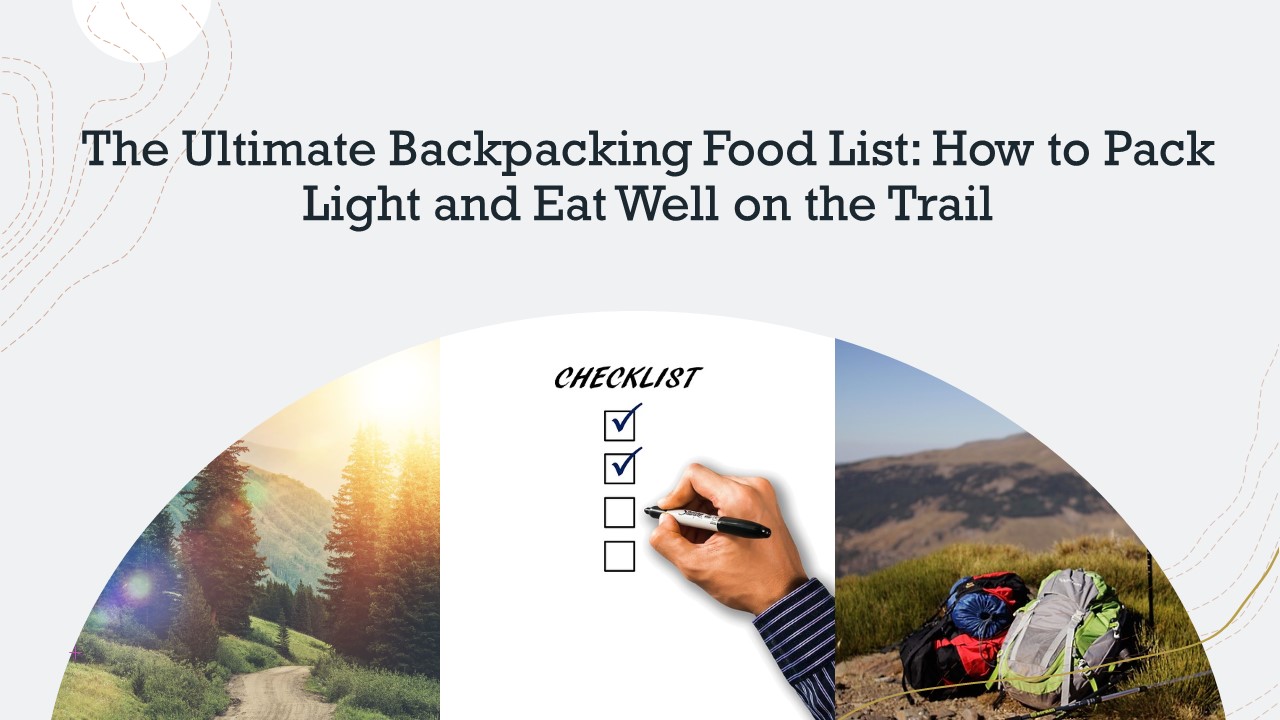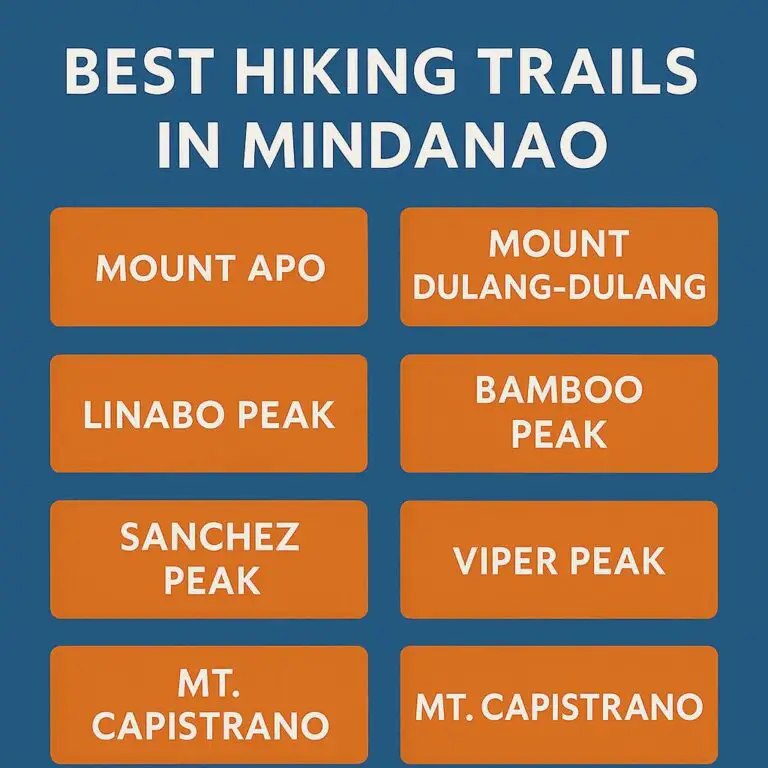My love for backpacking was born on a three-day trip in the Sierra Nevadas. But one thing I vividly remember, aside from the breathtaking vistas, was how I terribly missed having a well-planned food list. I ended up carrying some foods that were too bulky, others that weren’t fulfilling, and a few that didn’t last the trip. Since then, I have learned so much about packing the right food for backpacking, and I’m here to share that wisdom with you. In this post, I’ll be sharing an extensive backpacking food list that has saved me on many adventures, making sure I’m well-fed, energized, and not overburdened.
I’ll delve into breakfast, lunch, dinner, and snack ideas that are perfectly suited for the trail. Plus, I’ll give you some practical tips on packing these foods, and I’ll also consider different dietary needs. Whether you’re new to backpacking or an old hand, I’m confident you’ll find something useful here. Let’s get into it.
The Importance of a Well-Planned Backpacking Food List
In the world of backpacking, food isn’t just about satisfying your taste buds. Oh, no! It’s about a lot more than that. A well-planned backpacking food list is your lifeline on the trail—it’s the source of your energy, it’s the comfort that ends your day, and it’s the fuel that keeps you going.
- Nutrition and Energy: When you’re hiking, especially in challenging terrains, your body is working hard. This means you need more calories and nutrition than you do in your daily life. That’s why it’s crucial to pack foods that not only fill your stomach but also provide you with the nutrients you need to stay healthy and energetic.
- Weight Considerations: Every ounce counts when you’re backpacking. You don’t want to be that person who brought too much food and ended up with a backpack that’s heavier than a boulder. Hence, your food needs to be lightweight and compact, yet nutritionally dense.
- Simplicity: After a long day on the trail, the last thing you want is to spend hours preparing a meal. Simplicity is key. Opt for foods that require minimal preparation or are ready to eat.
Planning a backpacking food list might seem a bit daunting initially, but trust me, once you’ve got it down, it makes your adventure so much smoother. The right nutritious backpacking meals, combined with energy foods and lightweight options, can make your backpacking trip a true pleasure. So let’s dive into how to create this all-important list.
Factors to Consider When Creating Your Backpacking Food List
Now that you understand the importance of a well-thought-out backpacking food list, let’s delve into the factors you need to consider while creating yours.
- Nutrition: I can’t emphasize this enough! Your body will be burning through calories, so you need energy-dense food. Look for foods high in protein, healthy fats, and carbohydrates. Protein helps repair muscles, fats provide long-lasting energy, and carbs offer quick energy boosts.
- Weight and Size: When you’re carrying everything on your back, every ounce and inch counts. Aim for lightweight, compact, and calorie-dense foods. Dried fruits, nuts, and freeze-dried meals are fantastic examples.
- Shelf Life: Remember, there won’t be a refrigerator on the trail. Your food needs to be non-perishable and long-lasting. Avoid foods that spoil easily or are susceptible to extreme temperatures.
- Preparation: Easy-to-prepare or no-cook options can be a lifesaver on the trail. Backpacking is about enjoying the outdoors, not getting stuck cooking complicated meals. Instant foods, meal bars, and pre-cooked meals are some good options to consider.
- Personal Preferences and Dietary Restrictions: Lastly, consider your personal taste preferences and dietary restrictions. If you can’t stand the taste of food, you won’t eat it, no matter how nutritious or lightweight it is. Likewise, if you’re vegan, gluten-intolerant, or following a keto diet, make sure your food list caters to your specific dietary needs.
Keep these factors in mind when planning your backpacking nutrition and you’ll be well on your way to creating a food list that’s nutritious, lightweight, long-lasting, easy-to-prepare, and suited to your taste buds and dietary needs. So let’s move on to the exciting part—what to put on your ultimate backpacking food list.
The Ultimate Backpacking Food List
Now, let’s dive into the good stuff – the ultimate backpacking food list. From sunrise to sunset, here are the meals and snacks that will keep you moving on the trail.
- Breakfast Ideas: They say breakfast is the most important meal of the day, and when you’re backpacking, this couldn’t be more accurate. Start your day with some instant oatmeal or granola with powdered milk. For a protein boost, pack along some almond butter or instant scrambled eggs. Energy bars are also a great option if you prefer a quick, on-the-go meal.
- Lunch Ideas: When it’s midday and your tummy is rumbling, you’ll want a no-fuss meal. Consider packing tortillas or bagels to pair with tuna or chicken in foil packets. Another option is salami or hard cheese, which are both durable and don’t require refrigeration. For an extra nutrient boost, instant hummus or peanut butter also make great spreads.
- Dinner Ideas: After a long day on the trail, a warm and satisfying meal can do wonders. Pre-packaged freeze-dried meals are a popular option due to their light weight and ease of preparation. If you prefer to cook, consider instant rice or noodles with dehydrated vegetables. Add in some protein like jerky or dehydrated beans, and you’re set!
- Snacks: These are vital for maintaining your energy throughout the day. Trail mix, dried fruits, nuts, energy bars, and chocolate are all excellent choices. Jerky, cheese sticks, and crackers can also provide a nice savory break from sweet snacks.
- Drinks: Hydration is crucial when backpacking. Aside from water, consider adding electrolyte drink mixes to your list. For a comforting end to your day, pack some instant coffee, hot cocoa, or tea bags.
These are just a few ideas to start building your backpacking breakfast, lunch, dinner, and snack list. As always, remember to cater the list to your personal preferences and dietary requirements. Now, let’s tackle those dietary-specific needs next!
Dietary-Restricted Backpacking Food Lists
Absolutely, backpacking should be for everyone, and dietary restrictions shouldn’t stop anyone from enjoying a great adventure! So, here are some backpacking food ideas for those following specific diets:
- Vegetarian and Vegan Backpacking Food Ideas: Plant-based backpackers, worry not! There’s an array of options for you. For protein, consider packing lentils, beans, quinoa, seeds, and nuts. Instant oatmeal, pasta, and rice are great for carbs. Don’t forget about dried fruits and vegetables, too. You can also find vegan-friendly freeze-dried meals and energy bars in most outdoor stores.
- Gluten-free Backpacking Food Ideas: Gluten-free backpackers also have a plethora of choices. Look for gluten-free grains like quinoa, rice, or gluten-free pasta. Nuts and seeds, cheese, dried fruits, and vegetables are excellent snack options. Also, many pre-packaged freeze-dried meals are available in gluten-free varieties.
- Keto Backpacking Food Ideas: Following a ketogenic diet while backpacking might seem challenging, but it’s entirely doable. Focus on high-fat, moderate protein, and low-carb foods. Pack nuts and seeds, jerky, cheese, and tuna or chicken in foil packets. Look for low-carb veggies like bell peppers and broccoli, which can be dehydrated and added to meals.
Remember, no matter your dietary needs, there are always options available. It might require a bit more planning, but your health and comfort are well worth the effort. The key is to know what foods align with your dietary requirements and to plan accordingly. Next, let’s discuss some tips on packing these foods efficiently for your adventure.
Practical Tips on Packing Your Backpacking Food
Packing food for backpacking is an art. It’s not just about what you bring, but also about how you bring it. Here are 5 practical tips that can help you pack efficiently:
- Reduce Weight and Maximize Space: Remove excess packaging before you leave home to save space and weight in your backpack. For example, if you’re bringing instant oatmeal or freeze-dried meals, consider repackaging them into reusable ziplock bags.
- Waterproof Your Food: It’s essential to keep your food dry. Use resealable plastic bags or dry sacks to prevent water from reaching your food. It’s a simple step that can make a big difference, especially in unpredictable weather conditions.
- Pack Smart: Organize your food by meal and day to make it easy to find what you need when you need it. It’s frustrating to dig through your entire pack for that one snack bar.
- Consider Wildlife: Depending on where you’re backpacking, you may need to store food in bear-resistant containers or hang it in a tree overnight. Do your research on the local wildlife and the best practices to keep both you and them safe.
- Pack Environmentally Friendly: Wherever possible, opt for reusable packaging and be mindful of waste. Remember, “Leave No Trace” principles apply to food packaging too.
When it comes to packing backpacking food, it’s all about being smart and efficient. The less time and energy you spend managing your food, the more you can devote to enjoying your adventure.
Conclusion
I’ve covered a lot of ground in this post, From the importance of a well-planned backpacking food list to considering essential factors like nutrition, weight, shelf-life, and dietary preferences, I’ve delved deep into the world of backpacking food.
I’ve shared an extensive food list, suitable for different meals of the day, from breakfast to dinner, snacks, and even drinks. I’ve also made sure to include meal ideas for those with specific dietary restrictions, whether you’re vegan, gluten-free, or following a keto diet.
And let’s not forget the practical tips for packing your food efficiently – focusing on weight reduction, waterproofing, smart packing, wildlife considerations, and being environmentally friendly.
Armed with this information, you’re now ready to prepare a food list that’s not only satisfying and nutritious but also tailored to your personal tastes and dietary needs. Your next backpacking trip is bound to be a tastier and more energy-filled adventure.
Remember, these are just guidelines – part of the fun is tweaking your backpacking food list to perfectly suit your needs. So, don’t be afraid to experiment and try new foods! You might just stumble upon your new favorite trail meal.
And hey, I’d love to hear from you. What are some of your go-to backpacking meals or snack ideas? Drop them in the comments below and let’s make this a sharing ground for all backpacking enthusiasts!
Happy trails and bon appétit, backpackers!
You might want to read this article next: How Much Food To Bring Backpacking: A Comprehensive Guide








